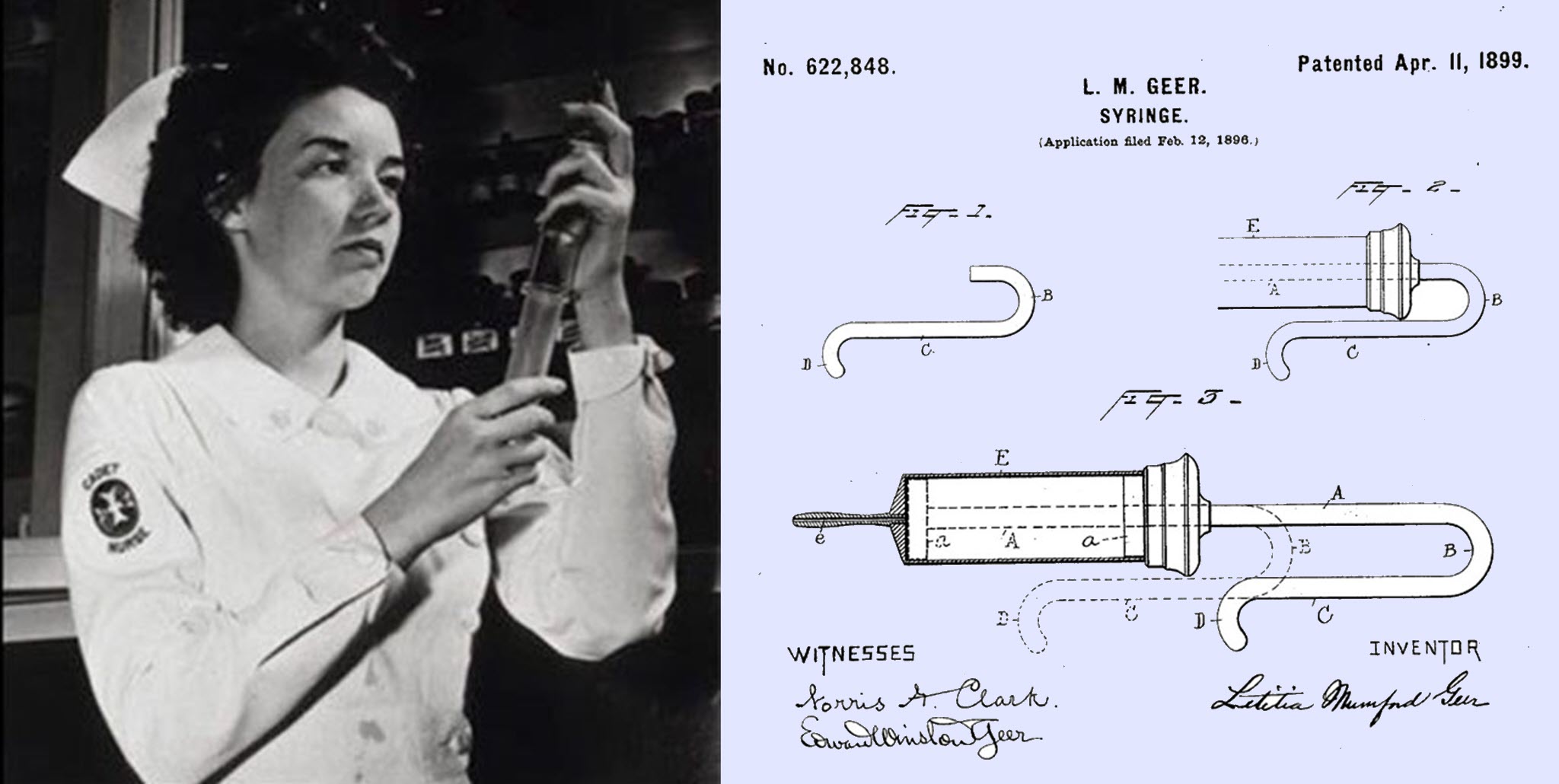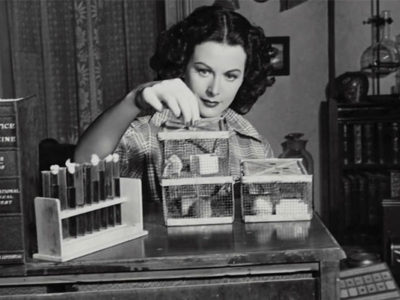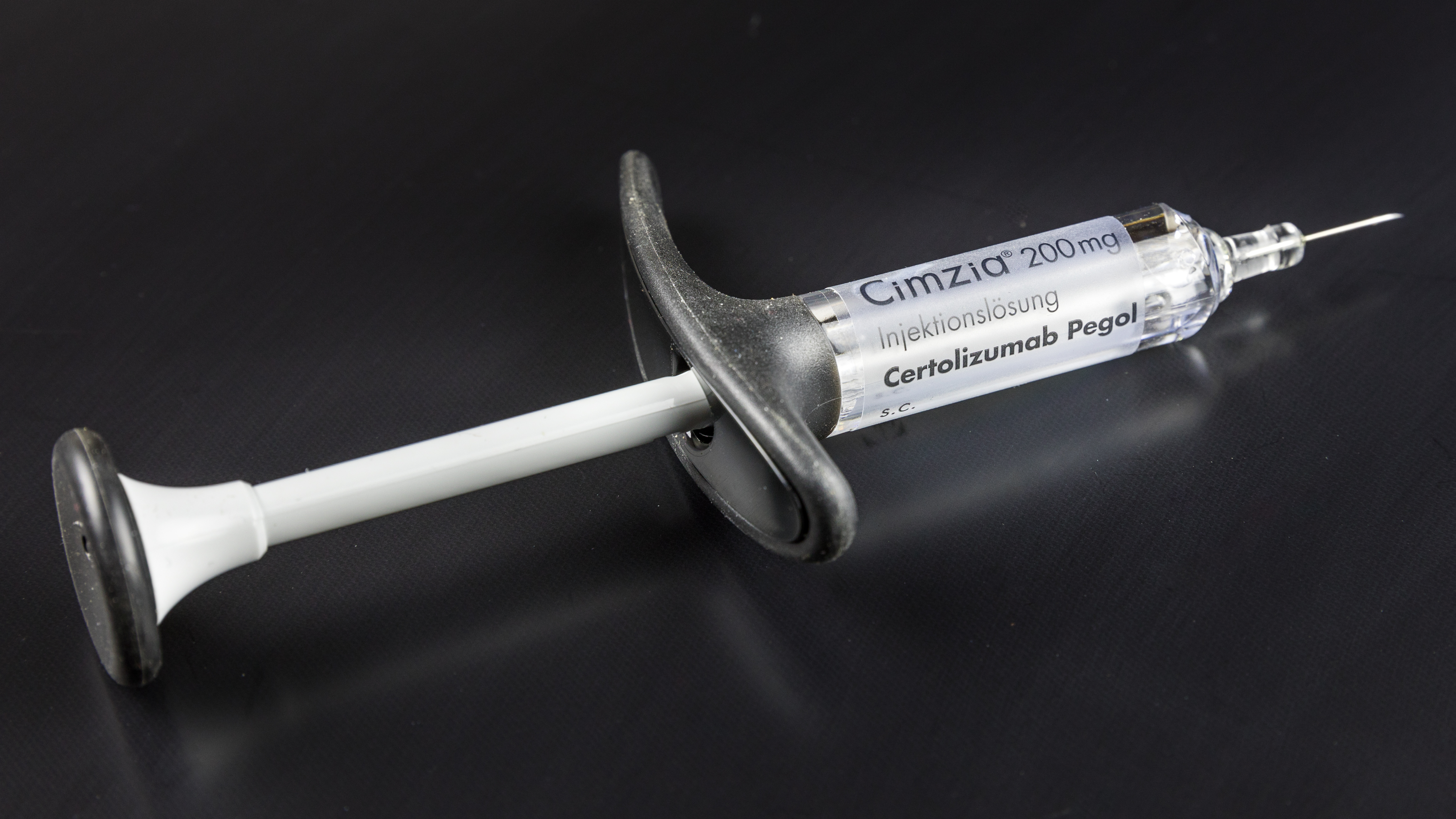
In the past several years, we have become all too familiar with shots in the arm. Vaccines have taken over the world in the past two years. But let’s talk about something else now. And that is a syringe. In its simplest form, it is a pump consisting of a plunger that fits tightly into a cylindrical tube.
The plunger can be pulled and pushed along inside the tube, allowing the syringe to pull in or push out a liquid or gas through the opening at the end of the tube.
Syringes date back to ancient Greece and Rome. But not in the form we use them today. They weren’t used to inject medication, but rather to anoint the skin with ointments and creams.

In the 9th century AD, an Egyptian surgeon created a syringe using a hollow glass tube and suction. Yet, it wasn’t until the 19th century that they took up on the design we are familiar with.
And that is all thanks to Letitia Mumford Geer, a nurse who revolutionized healthcare with her 1899 patent of a compact syringe that could be operated with one hand.
Operating the syringe with one hand made it easier for a medical professional or even a patient to use. Yes, the negative effects of that drug addicts could easily use it. But let’s go back to the positive and the big achievement by the New York nurse.
Born in 1852 in New York, United States to parents George Warren Geer and Cornelia Matilda Geer, Letitia had four siblings. They all lived in New York. Letitia lived for most of her life in New York.
On April 11, 1899, her patent was approved with the publication number US622848A. In the patent application, she stated how the syringe would be used.
The application read, “The operator must insert the nozzle in the rectum and holds the cylinder by placing the fingers of the same hand in the rigid arm of the handle. The handle is in a position away from the cylinder before injecting the medicine. The extension prevents the fingers from slipping off the rigid arm. The handle can be drawn into a position near to the cylinder while injecting the medicine by the use of one hand, thereby enabling the operator to use the syringe-upon himself without the aid of assistant.
Little more is known about her education and work history. Letitia passed away in 1935 in Kings County New York. She was 83 years at the time.
Letitia filed for her patent for a new design for the medical syringe on February 12, 1896. It was three years later that her patent for the one-handed syringe design was granted. That patent design helped revolutionize health care, making it easier for health care workers and for patients.
Her syringe design includes a cylinder, piston rod, a handle and nozzle. The piston rod had a U-shaped handle for easier grip. The handle was designed in a way to be reached even in extreme positions. The hook at the free end of the syringe prevented hands from slipping.
There were many advantages to her design. For starters, the syringe is simple and cheap. It can be operated with just one hand. And it can be used for rectal injections and similar purposes. Physicians and patients can both operate the new syringe.

Modern syringes are inspired from her original idea. So, today, whenever you see a needle, think of Letitia Geer. Modern day medical syringes were adapted from her original idea and design. She is one of the many women who have helped to define our modern medical devices. And sadly, she is largely forgotten when it comes to notable names who have advanced medical health care.

Charlotte Cleverley-Bisman contracted Meningococcal Septicaemia at the age of six months. Since then, she lives an extraordinary life.Because of the condition, doctors were f...
Did you know that during World War, vehicles in France became mobile X-ray units? Or that during WW1, there was a widespread use of treatments and vaccinations for deadly dis...
There are around 4 quadrillion quadrillion bacteria on Earth. Not all of them are bad. Some are good for our health. But the greatest danger to modern medicine nowadays is ...
Did you know that the average cruising speed of emergency helicopters is 120 miles per hour? That is all thanks to the exceptional engineering.Inside, these helicopters featu...